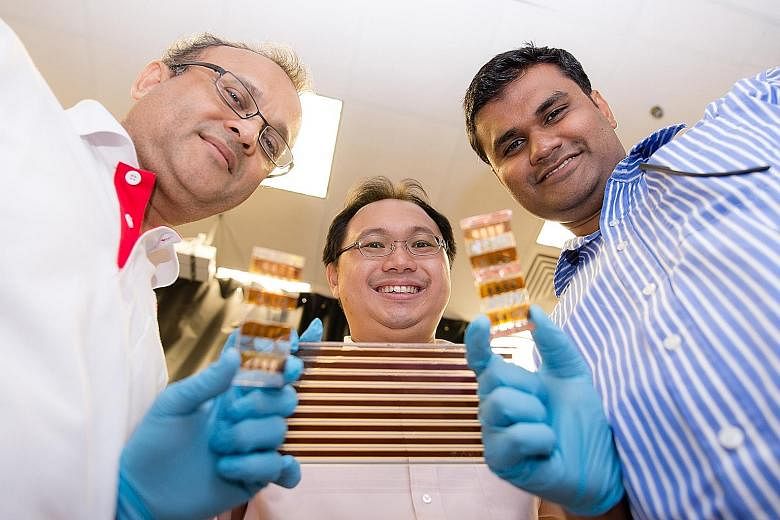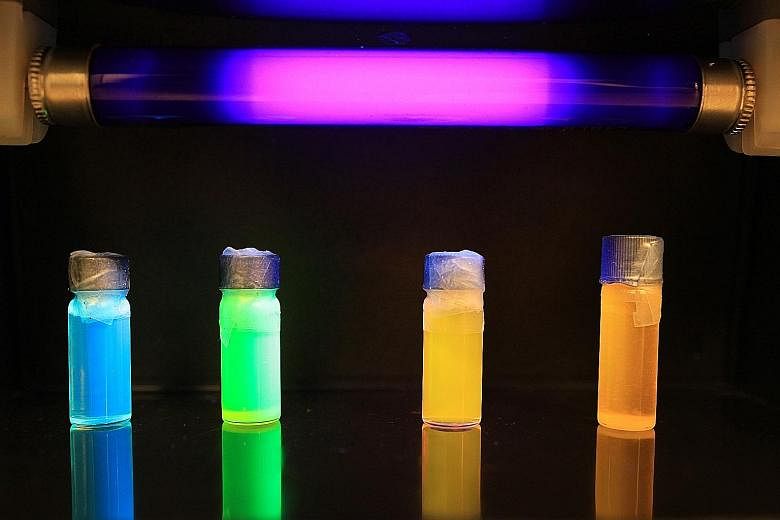Scientists are finding out that tandem solar cells, which combine conventional silicon with other material, may have improved efficiency over the conventional silicon cell.
Researchers at the Nanyang Technological University (NTU) and the Singapore-Berkeley Research Initiative for Sustainable Energy are looking into tandem cells made by layering perovskite - a man-made substance - over silicon. They have shown that such cells have efficiencies of over 20 per cent.
In comparison, most silicon solar cells have efficiencies of between 17 per cent and 18 per cent, although more expensive models have recorded efficiencies of up to 25 per cent, said Professor Subodh Mhaisalkar, executive director of NTU's Energy Research Institute.
The efficiency of a solar cell is the proportion of energy from the sun that it turns into electricity.
But Professor Subodh said tandem cells, if used in combination with conventional silicon cells, for example, could achieve efficiencies exceeding 25 per cent in a solar module, or solar panel, which is made up of many connected cells.
The NTU-made tandem cell works by layering translucent perovskite over opaque silicon. Each layer captures a different "type", or colour, of light.
Light is electromagnetic radiation, some of which can be seen and some of which is invisible to the human eye. Infrared and ultraviolet radiation, for example, cannot be seen. They lie at either end of the visible spectrum of light.
Silicon solar cells are able to convert near-infrared light into electricity. But they are less efficient for visible and ultraviolet light.
Perovskite, on the other hand, is better at converting visible and ultra-violet light into electricity.
"So when light enters through the perovskite cell, the visible part of the solar spectrum is absorbed.
"The near-infrared light is then transmitted to the silicon cell where it is absorbed," said NTU Assistant Professor Nripan Mathews, one of the scientists doing perovskite research.
Over at the Singapore-MIT Alliance for Research and Technology (Smart), scientists are working on gallium arsenide-silicon tandem cells, which have recorded efficiencies of up to 25 per cent.
Gallium arsenide tandem cells are more expensive to make than perovskite ones, but the former also have higher efficiencies and are more stable for use on rooftops, said Professor Armin Aberle, chief executive of the Solar Energy Research Institute of Singapore. The institute is working with both NTU and Smart on tandem cell research.
Prof Aberle said tandem cells could provide more solar power per rooftop, helping land-scarce Singapore harvest more solar energy than with standard silicon panels.
He added: "The question is when inexpensive high-efficiency tandem solar panels will be commercially available... This technology still needs a lot of research and development in the laboratory until it can be commercialised."




